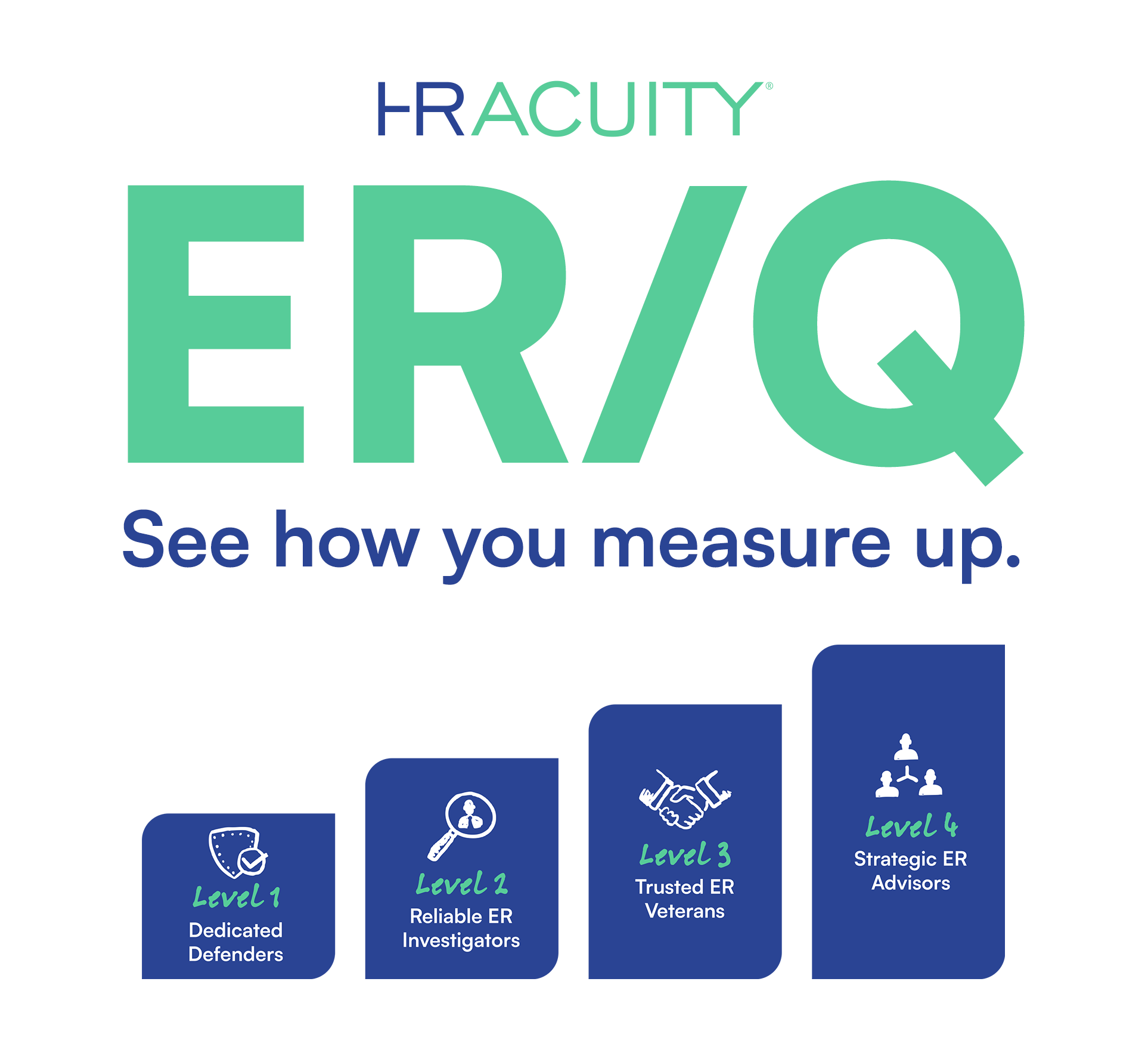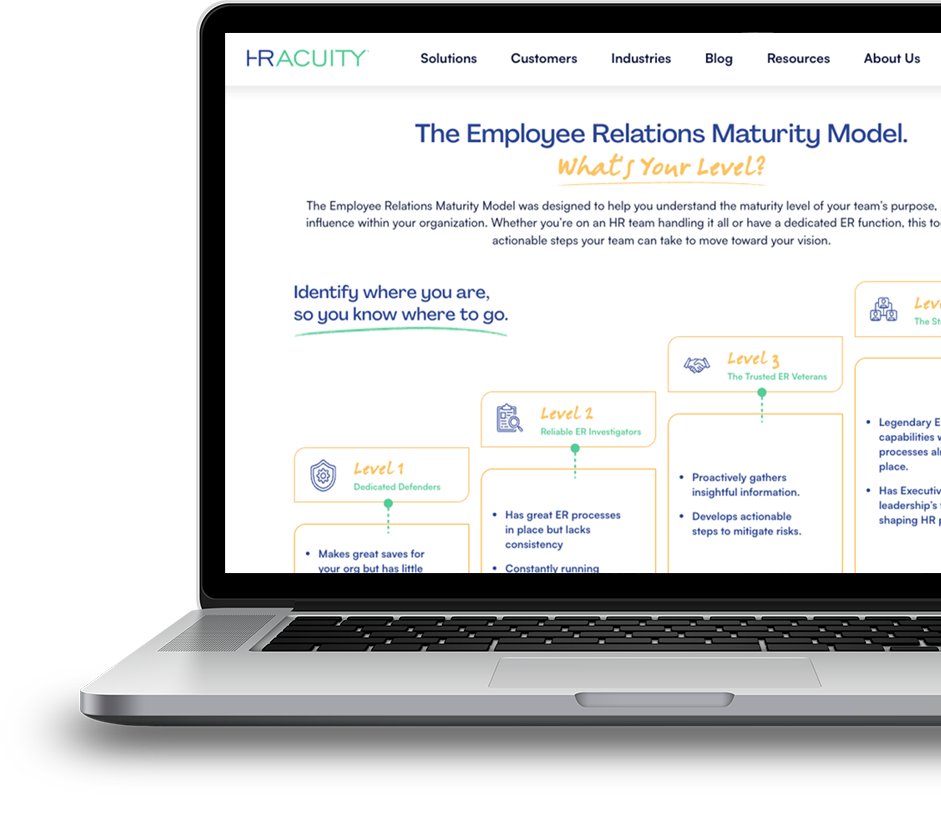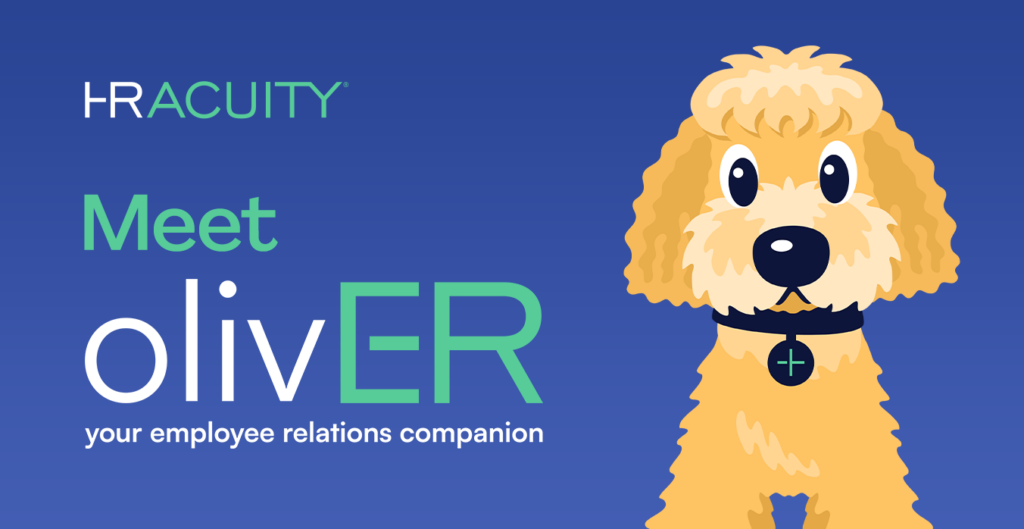At HR Acuity, we are excited to roll out a new maturity model for assessing where you are on your ER journey. This maturity model is called ER/Q, or Employee Relations Quotient.
To dive deeper, having a high ER/Q means that your organization is intellectually in touch with your employees and investing in your ER. A high ER/Q is built upon data-driven insights and proactive decision making across your entire organization. Are you ready to unlock the potential of smarter ER with HR Acuity and raise your ER/Q? If so, let’s dive in.
Why does ER/Q matter?
Whether you are a large or small organization, employee relations matter. We know that keeping employees engaged is directly correlated with your organization’s success. They expect fairness, transparency and respectful relationships. But none of this just magically happens. Building a trustworthy ER team requires articulating your vision, establishing a baseline for where your team is, and mapping and executing the right steps to move towards your stated vision. Teams that successfully do this earn the trust of employees and the confidence of executives. They find themselves invited to share insights and influence policy conversations instead of constantly being called to put out fires. Essentially, having healthy ER/Q will take your organization from reactive to proactive.
How to determine your ER/Q
Step 1: Take the Quiz
Once you’re ready to dive in, getting started is easy! Take the nine-question quiz to identify where you are on the ER maturity scale. The tool was created using a combination of insights from our annual benchmark survey and discussions within our growing community, empowER, a group of ER professionals that come from organizations of all sizes and industries.
Step 2: Understand Your Level
Once you’ve established your baseline, start exploring the maturity level chapter that most closely reflects your ER/Q score. You will be presented with a description of the vision, strategy, processes, decision data, influence level, focus and style that often characterize each level. In addition, you’ll see common challenges, organizational structures, and signals that identify you’re ready to move to the next level. Finally, see some short-term goals and KPIs that drive concrete action for advancing your ER team.
Here is a quick breakdown of the four ER/Q levels:
Level 1: The Dedicated Defenders
Organizations that receive this baseline score are at the beginning of their maturity journey. They’ve got a lot of work ahead of them, but there’s no cause for alarm – this is where most teams start! Traits that this group often share include:
- Policies are inconsistent which leads to turnover and leadership changes.
- There is a lack of case tracking and consistent documentation which can leave you vulnerable to lost paper documents.
- They have a large HR team that is tapped to wear many different hats and clean up messes after issues arise (reactive).
Suffice to say, there’s a lot of room for growth, but the good news is that the only way to go is up!
Level 2: The Reliable ER Investigators
Scoring a level two means that this organization is further along the path on this maturity journey. ER is viewed as a required capability in the organization and solving cases is considered an important ‘part of HR.’ Other traits include:
- Policies are consistent, but mostly reactive so employees and managers don’t always know where to go or what to do until after an issue occurs.
- No formal training for investigations leaves room for interpretation and falling back on past experience from other organizations.
- Decision data is being tracked in a spreadsheet which means reporting is always ad hoc.
In short, there are a lot of moving parts which can feel hectic. Everyone should be thanking this ER team since they’re ‘keeping it together’ for everyone else. Level 2 teams’ focus is usually on building consistency and staying efficient, so there’s still plenty of work to do.
Level 3: The Trusted ER Veterans
Level 3 organizations are well down the path along the maturity journey. ER is viewed as a trusted partner across functions like HR, legal, and other lines of business. Leadership and employees trust the ER team. The ER team is a strong partner driving efforts that employees truly appreciate, including DEI and learning and development. Some challenges our ER veterans face include:
- Policies are well documented and understood, but still reactive so employees and managers only know where to go or what to do after an issue occurs.
- Software is helping you track cases and keep important documentation at your fingertips, but they’re still relying on “gut feelings” when it comes to predicting potential issues and hot spots.
- Even though they are trusted partners, they aren’t invited to the earliest stages of strategic policy making where they could help to take a proactive approach.
If an organization is asking for ER leaders to increasingly take more “off the HRBP plate,” this is a good sign that they are ready to level up and increase their ER/Q.
Level 4: The Strategic ER Advisors
Congratulations are in order for our level 4 organizations! These teams are well-oiled machines, carving new paths for others on the maturity journey. Their processes are digital, and decision data includes macro level insights and predictive analytics. The ER team is viewed as a trusted, strategic advisor for all functions in the organization. Furthermore, employees trust that their ER team has their best interests at heart, and that they’ve built a safe, compliant culture that guards privacy while encouraging transparency. However, just because they’ve scored a level 4, doesn’t mean they should stop there. Some challenges this group commonly faces are:
- Insight into potential issues and hot spots may occur more frequently than they have time to meet with executives. The need for digestible information in formats that speak to the business would be helpful.
- Scaling the team to grow and develop stronger analytics capabilities is more important than ever.
- Lines between “employee engagement” and ER are blurring as the employee experience becomes even more transparent.
Even in well-oiled machines, there’s always room for fine tuning. So, level 4 advisors should keep going on that ER/Q journey!
Are you ready to find out your ER/Q? Take the quiz today!
Our hope is that this ER/Q model will serve as an encouraging guide for teams on a journey to evolve their ER. Whether you’re on an HR team handling it all, or have a dedicated ER function, this tool provides not only a means to establish your baseline, but also provides actionable steps your team can take to move towards your vision. By using our ER/Q model, HR Acuity is empowering your ER team to take the lead, quickly solve investigations, use predictive data to address patterns early, and foster the most productive and positive environment for employees. We are excited to see you put this ER/Q model to the test and can’t wait to see how you implement your results and grow as a team. Take the quiz here, and be sure to reach out with any questions or feedback.




